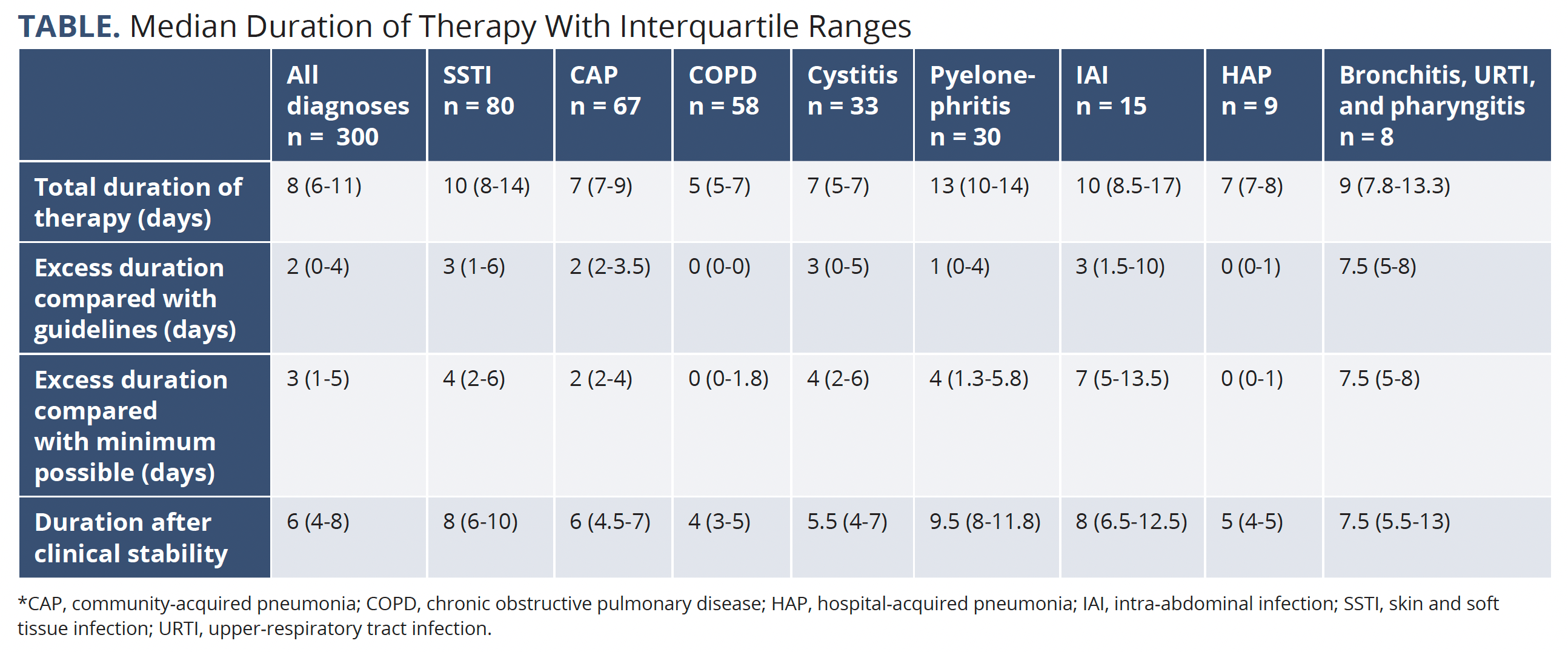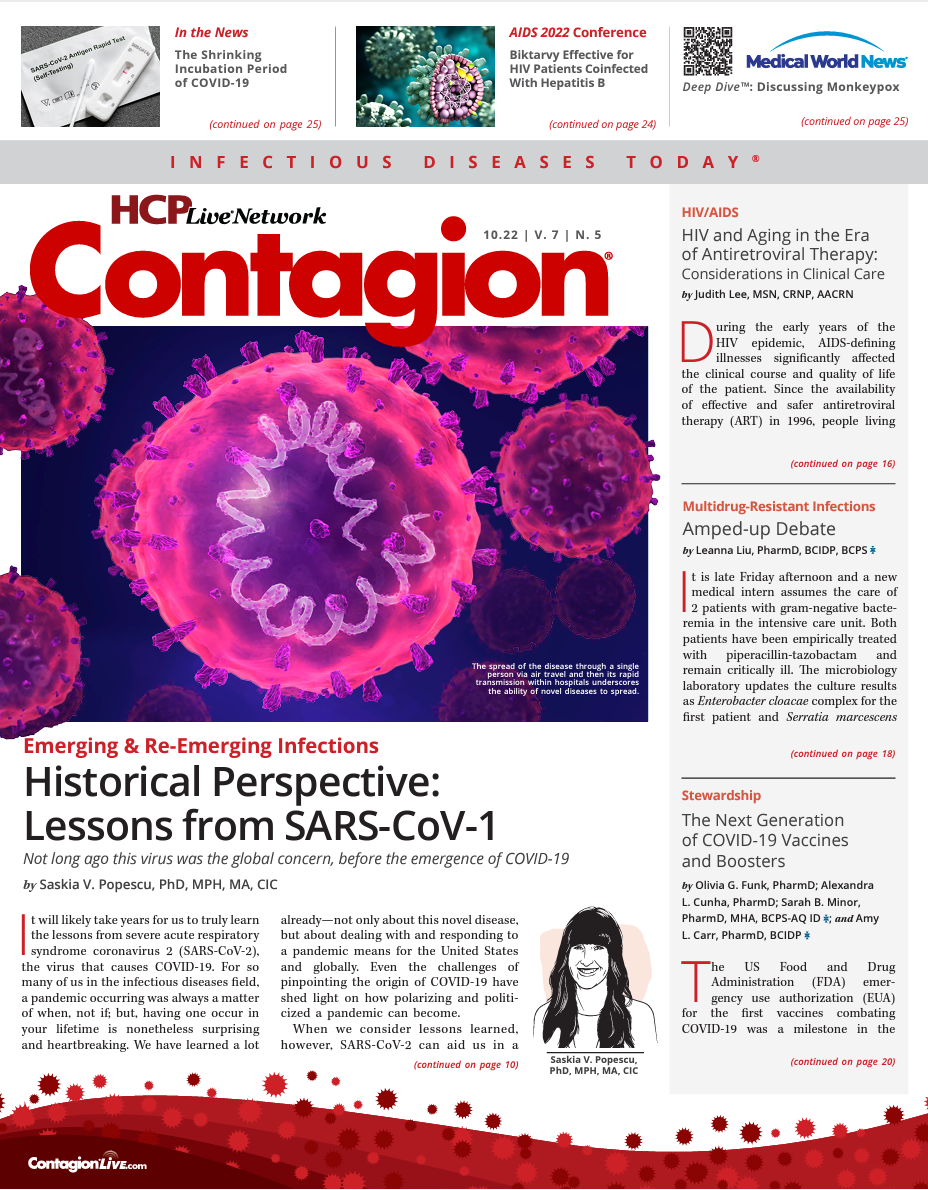That’s Not Appropriate: A Look at Antibiotic Prescribing Post Discharge
Extending antimicrobial stewardship programs to transition of care and discharge may prove beneficial to reduce unnecessary antibiotic use.

Because of the rise in antibiotics use, antibiotic resistance and multidrug-resistant organisms are a significant global concern.1 Therefore, there is an increasing emphasis on antibiotic stewardship programs to help reduce excessive use of antibiotics and curb the development of antimicrobial resistance and related adverse effects such as Clostridioides difficile infection.2 Many stewardship programs focus on the inpatient setting.3 However, a significant portion of antibiotic use happens post discharge,3 with reports of 20% of patients receiving antibiotic prescriptions at that time.4 This transition of care with potentially inappropriate or unneeded prescriptions may increase the risk of antibiotic-related adverse effects.5 Thus, extending antimicrobial stewardship programs to transition of care and discharge may prove beneficial to reduce unnecessary antibiotic use.
Sedlock and colleagues performed a retrospective study evaluating 300 patients discharged from a 700-bed tertiary care center. Patients were included if they were 18 years or older and had a diagnosis of community-acquired pneumonia (CAP), hospital-acquired pneumonia, cystitis, pyelonephritis, skin and soft tissue infection (SSTI), intra-abdominal infection (IAI), chronic obstructive pulmonary disease (COPD) exacerbation, bronchitis, or pharyngitis with a stay of 2 days or more.
The authors excluded patients who were pregnant; those with cystic fibrosis; those with HIV with a CD4 cell count less than 200 or who were in receipt of chronic immunosuppression; those with a hospital stay greater than 30 days; and patients with more serious infections such as endocarditis, osteomyelitis, or prosthetic joint infection. The following patients were also excluded: those admitted to the emergency department or intensive care unit only, patients with bloodstream infection caused by Staphylococcus aureus or an unknown organism, those who received antibiotics for long-term suppression or prophylaxis, patients discharged against medical advice, patients treated for a fungal pathogen, and those who were discharged and received intravenous antibiotics.
The authors compared the total prescribed duration of antibiotic therapy in discharged patients with 3 different benchmarks: Infectious Diseases Society of America guidelines, the minimum supported by clinical trials, and duration beyond the point of clinical stability. Clinical stability was defined as normal vital signs with improvement of infection signs and symptoms.
The most common diagnoses were SSTI, CAP, and COPD exacerbation, which together accounted for about 75% of all cases. The authors found that the median duration of therapy was 8 days, with an IQR of 6 to 11 (Table). When they compared the data with the guidelines, treatments were found to be 2 days longer than recommended (IQR, 0-4). Compared with data from recent clinical trials showing similar rates of treatment success with classic regimens,6 there was an excess of 3 days of treatment (IQR, 1-5). The authors reported variability in prescribing, with SSTI and IAI having the largest IQRs; they also observed the most inappropriate durations with SSTI, IAI, and cystitis, which had the longest excess durations of therapy (Table).
The paper had some limitations. First, appropriate use of antibiotic therapies can be difficult to gauge due to clinical considerations that may lead to the appropriate lengthening or shortening of duration of therapy. Second, the clinical stability parameters were determined via chart review, which may have led to some potential miscategorizations.
Results reported by the authors mirror those of other studies that showed inappropriate therapy postdischarge. For example, study findings have demonstrated that up to 70% of antibiotic courses prescribed at discharge could be improved with changes such as use of safer or more narrow-spectrum antibiotics, lowering duration of therapy, or cessation of antibiotic therapy.2
The authors present a compelling case of the importance of antimicrobial stewardship in postdischarge and transition-of-care settings. They highlight that inappropriate dosing can occur due to inpatient days of treatment not being counted when discharging and suggest other improvements that could be made such as the frequent use of fluoroquinolones and treatment of asymptomatic bacteriuria.
Taken together with findings from other literature, the post discharge time frame should be targeted to aid in the reduction of antimicrobial use. Data from a 2020 study showed that the use of transition-of-care pharmacists may help improve discharge prescribing practices.7
A rise in the development of antibiotic resistance has led to an increased focus in antimicrobial stewardship. An increased focus on the postdischarge phase of treatment is potentially a way to reduce improper or inappropriate antibiotic use and help reduce the risk of drug-resistant pathogens in patients and the community.
References
- Chavada R, Davey J, O’Connor L, Tong D. ‘Careful goodbye at the door’: is there a role for antimicrobial stewardship interventions for antimicrobial therapy prescribed on hospital discharge? BMC Infect Dis. 2018;18(1):225. doi:10.1186/s12879-018-3147-0
- Vaughn VM, Hersh AL, Spivak ES. Antibiotic overuse and stewardship at hospital discharge: the reducing overuse of antibiotics at discharge home framework. Clin Infect Dis. 2022;74(9):1696-1702. doi:10.1093/cid/ciab842
- Feller J, Lund BC, Perencevich EN, et al. Post-discharge oral antimicrobial use among hospitalized patients across an Integrated National Healthcare Network. Clin Microbiol Infect. 2020;26(3):327-332. doi:10.1016/j.cmi.2019.09.016
- Conner M, Harris WH, Bomkamp JP. ADD it up: an evaluation of antibiotic duration at hospital discharge at a Community Hospital. Open Forum Infect Dis. 2021;8(8):ofab399. doi:10.1093/ofid/ofab399
- Yogo N, Haas MK, Knepper BC, Burman WJ, Mehler PS, Jenkins TC. Antibiotic prescribing at the transition from hospitalization to discharge: a target for antibiotic stewardship. Infect Control Hosp Epidemiol. 2015;36(4):474-478. doi:10.1017/ice.2014.85
- Hanretty AM, Gallagher JC. Shortened courses of antibiotics for bacterial infections: a systematic review of randomized controlled trials. Pharmacotherapy. 2018;38(6):674-687. doi:10.1002/phar.2118
- Mercuro NJ, Medler CJ, Kenney RM, et al. Pharmacist-driven transitions of care practice model for prescribing oral antimicrobials at hospital discharge. JAMA Netw Open. 2022;5(5):e2211331. doi:10.1001/jamanetworkopen.2022.11331

